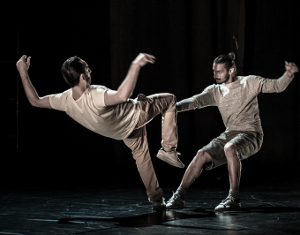The “First Sundays at St. Matthias” Chamber Music series continues to thrive. The free will offerings from this series are used to restore and maintain this historic church, whose sanctuary has acoustic qualities that are universally praised by chamber musicians and audiences. The musicians providing the “First Sunday” series are a mixture of professional and amateur chamber players, all of whom donate their skill and time.
The Signature Winds from Sylva, NC, were the ensemble performing for the last concert of the fourteenth season. This group includes Kathy Alley on flute, Pat Stone on oboe, Charles Alley on clarinet, Mary Thomas on bassoon and Stephanie Lyon on French horn. These are all amateur musicians who perform also in various concert bands and orchestras in Western North Carolina. While they are missing the tight coordination and subtle gradations in tempo and dynamics that can be found with a professional wind quintet, these musicians have the basic skills and musicianship necessary to provide a pleasing concert, which they did on Sunday.
The pleasure was enhanced by the program selection, which included two particularly interesting works: Andrejs Jansons’ 1976 composition Senlatviešu deju svita (“Suite of Old Lettish Dances”) and Charles Lefebvre’s Suite for Wind Instruments, Op. 57.
Born in Riga, Latvia, Andrejs Jansons was educated at American universities and has had a long career as an oboist and teacher in the United States. He resides in New York City, where he conducts the New York Latvian Concert Choir, but frequently travels to Europe, where he conducts in Scandinavia and the Balkan States. The Suite of Old Lettish Dances contains five movements. The first two, “Sarabumbals” and “Mummers Dance” are simple compositions focused on two chord changes, like Rock and Roll. “The Dawn” is a slow andante, in which the flute dominates, and then the clarinet bursts forth as the sun climbs into a clear sky. The concluding passage is subdued. The final two movements, “Long Dance” and “Wedding Dance,” provide a nice contrast of serious and cheery music respectively, with the finale written in 5/8 tempo, providing a strict alternating “three-two” meter.
Charles-Édouard Lefebvre (1854-1917) was an admirer of his contemporary Claude-Paul Taffanel (1844-1908), who was the founder of the great French school of flute playing that dominated the twentieth century through students of Taffanel such as Marcel Moyse (1889-1984), and perhaps culminated in the great Jean-Pierre Rampal (1922-2000). The Suite for Wind Instruments, Op. 57 by Lefebvre is a standard of the wind quintet repertoire, and justifiably so. It demonstrates a superior understanding of how to “orchestrate” sound for these five instruments. Lefebvre not only composes beautifully for the modern metal flute, but also understands the particular sonorities of the oboe, clarinet, bassoon and horn. He uses the latter two instruments sometimes as an underlying bass and sometimes for solo passages, always in taste.
Robert Washburn’s Suite for Woodwind Quintet, while interesting, lacked a distinctive compositional voice. The third movement, in particular, owed a debt to George Gershwin’s “An American in Paris” with its evocation of Paris taxi horns. The other works on the program were uninspiring arrangements or transcriptions of works originally intended for different instruments, and probably better left to those instruments. The Jansons and Lefebvre suites were the prizes of the afternoon.











